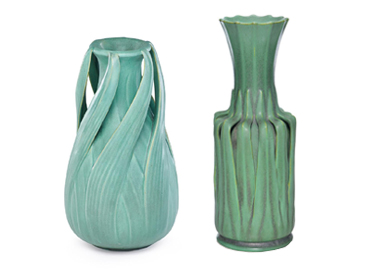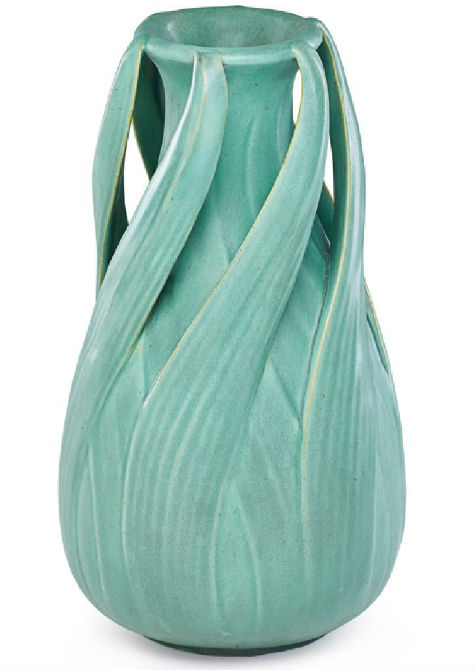
NEW YORK – Teco pottery is famous for the simple, matte green glazes that dominated over 90 percent of the line, which consisted of more than 500 designs by 1911, in the company’s heyday. The story of Teco dates back to 1881, when William Gates founded the American Terra Cotta Tile & Ceramic Co. in Terra Cotta, Illinois, not far from Chicago. The company produced terra-cotta bricks, drain tiles and pottery and was the country’s first manufacturer of architectural terra-cotta.
Gates introduced the Teco pottery line in 1902, after using his facilities to experiment with clays and glazes in an effort to design a line of art pottery. He called it Teco – a cheeky marriage of the first two letters in “terra” and “cotta.” His timing was perfect: Teco exemplified the pottery of the Prairie School / Arts & Crafts movement, made popular by Frank Lloyd Wright. Many of the early designs were Gates’ handiwork; later ones are attributed to several Chicago-area architects.
Some of Teco pottery’s matte green glazes exhibit a charcoaling effect in the form of a metallic, black overglaze. Other successful Teco colors included brown, yellow, blue, pink and maroon.
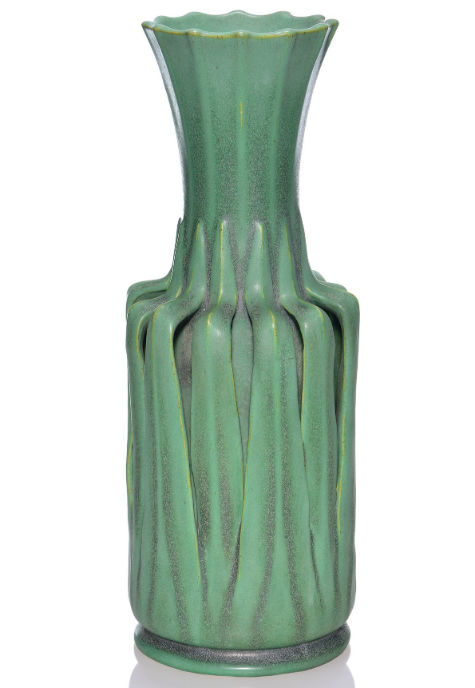
While Teco’s matte glazes are of consistent, high quality, the true attraction of Teco pottery rests with the uniqueness and creativity of the various forms: geometric, organic and architectural. The geometric forms with angular handles and buttresses are generally the most sought-after.
“Teco produced some amazing forms in its early years that worked well with Arts & Crafts and Prairie School homes, so they had a ready audience who liked their product,” said Riley Humler of Humler Nolan in Cincinnati, Ohio. “Teco’s green matte glaze was consistent but somewhat boring. Grueby and Wheatley made more fluid and organic glazes but Teco relied on its addition of ‘charcoaling’ a bit of black dusting on the green that gave it some character.”
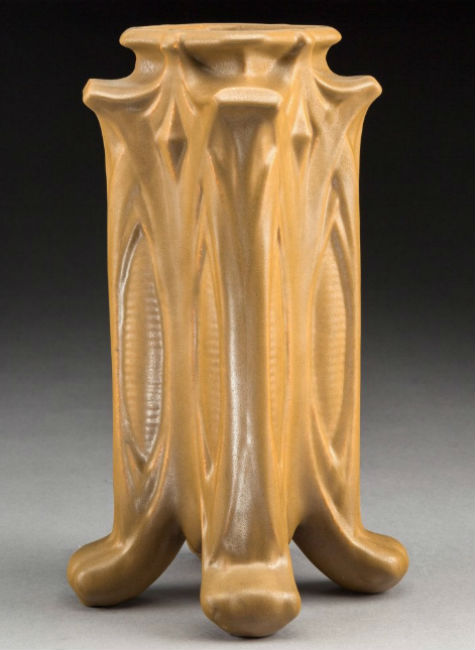
Teco forms hold more interest, with some being innovative and exciting, Humler said, giving Teco pottery “an A-plus for form and B-minus for glaze, with the exception of its crystalline glaze, which is quite interesting.” Humler said the demand for Teco pieces today is “good but declining from the golden days of the early 1980s.” He added, “Some of the incredible forms will always be in high demand because of their rarity. Everything else is doing OK but not great.”
David Rago of Rago Arts & Auction in Lambertville, New Jersey, said Teco made so much pottery during its years of operation, and they made so many different forms, that it was destined to be a collectible, “though I don’t like using that term.” Further, he said, “Some top people, notably Frank Lloyd Wright, designed for them, and this is no small thing. Additionally, they defined the Chicago Arts and Crafts aesthetic.”
Each area – Boston, New Orleans, San Francisco – added its own flavor to what Arts and Crafts design meant, Rago said. “In Teco’s case, angular and finely produced, though mostly molded – in its way, machined – in keeping with the Modernism that was peculiar to Chicago. Think about their skyscrapers from that time, since the city had burned to the ground, affording a clean slate for architects to rebuild with a new, contemporary vision. All of these things make Teco ceramics an unusual addition to the Arts and Crafts canon.”
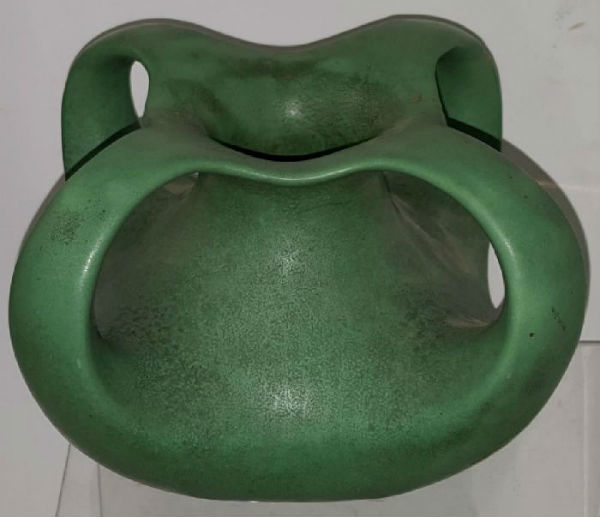
But Rago also pointed out that the current market demand for Teco, “as with most things from the Arts and Crafts period, is down. Teco prices, on average, are a good 30 percent lower than those a decade ago. As ‘new’ as these works are in their way, they are not what is considered Modern now, or post-World War II. I have no clue where this market will go. That’s up to the millennials and whether or not they choose to collect.”
John Walcher of Toomey & Co. Auctioneers in Oak Park, Illinois, said Teco’s line of pottery accomplished both functionality and good design. “As such,” he said, “good design is timeless and will always be regarded as such. The various forms are able to stand out on their own, but are also able to blend into many different aesthetic environments. The most popular glaze used by Teco was a green glaze, which gives the objects a very organic feeling.”
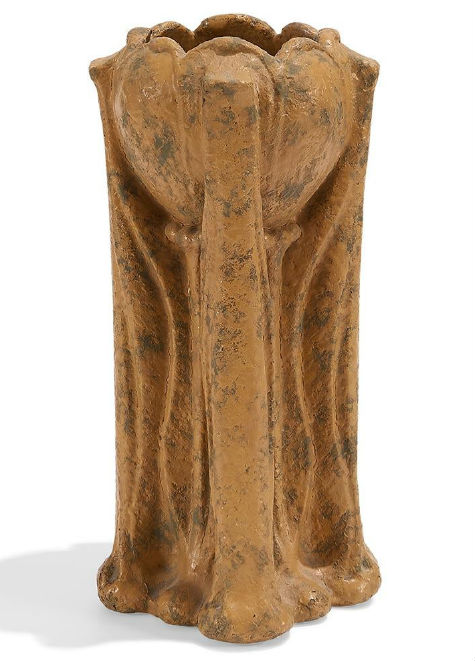
Walcher said his company has “collectors that focus on the Arts & Crafts Movement or Prairie School, and one would expect them to be interested in Teco pottery given the period, which they are. However, we also have collectors whose main passion is postwar and modern design, but these collectors will also look at Teco to fill in amongst their decorative arts at home.”
Walcher said the market, like any market, has its fluctuations. “During the revival of the American Arts & Crafts Movement in the 1970s and 1980s, prices were on the rise and many records were set,” he observed. “They continued to stay relatively steady through the 1990s and early 2000s, especially for larger and more dramatic forms. The recession in 2008 had an impact on many buyers and we saw many collecting categories start to decline more so in prices, not just Teco.”
He added, “It’s hard to say where any market trend will go in the future, but I would think now more than ever is a great time to buy Teco pottery. In addition, the Museum of the American Arts and Crafts Movement in St. Petersburg, Florida, is set to open at year’s end. I believe there will be a renewed interest in Teco as museum-goers are introduced to the pottery, possibly for the first time. In my opinion, as long as there are collectors and interior designers looking for good design, there will be buyers of Teco pottery.”
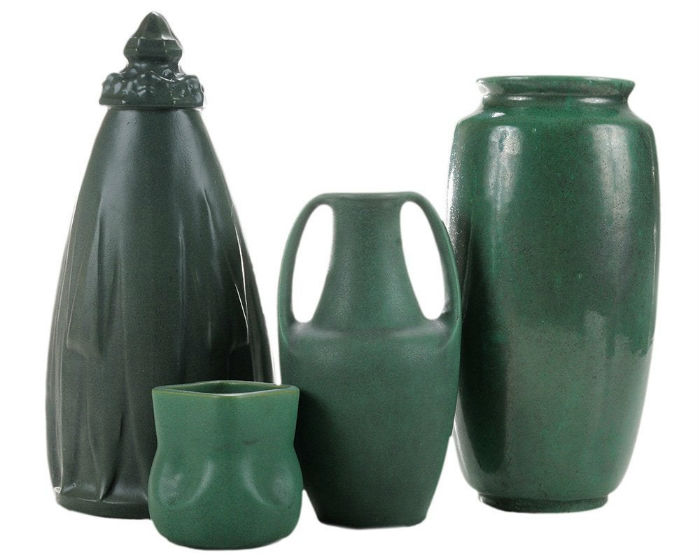
The exact ending date of Teco pottery is unknown. Ads and articles about Teco pottery have been found dating up to about 1923. William Gates retired in 1913 to write for Clay-Worker Magazine but returned in 1915. His son, Major Gates, a ceramic engineer, invented a pressing machine and tunnel kiln, and also a glaze spraying apparatus called a pulischrometer. In 1918, they acquired Indianapolis Terra Cotta Co. In 1919, a Minneapolis branch opened.
In October 1929, the Indianapolis branch closed due to the stock market crash. Later, the plant also fell victim to the Great Depression and operations ceased. In 1930, ownership was transferred to George A. Berry Jr; Gates’ attorney. Terra-cotta production resumed until 1941. After World War II, the company resumed manufacturing structural clay products through 1966.


